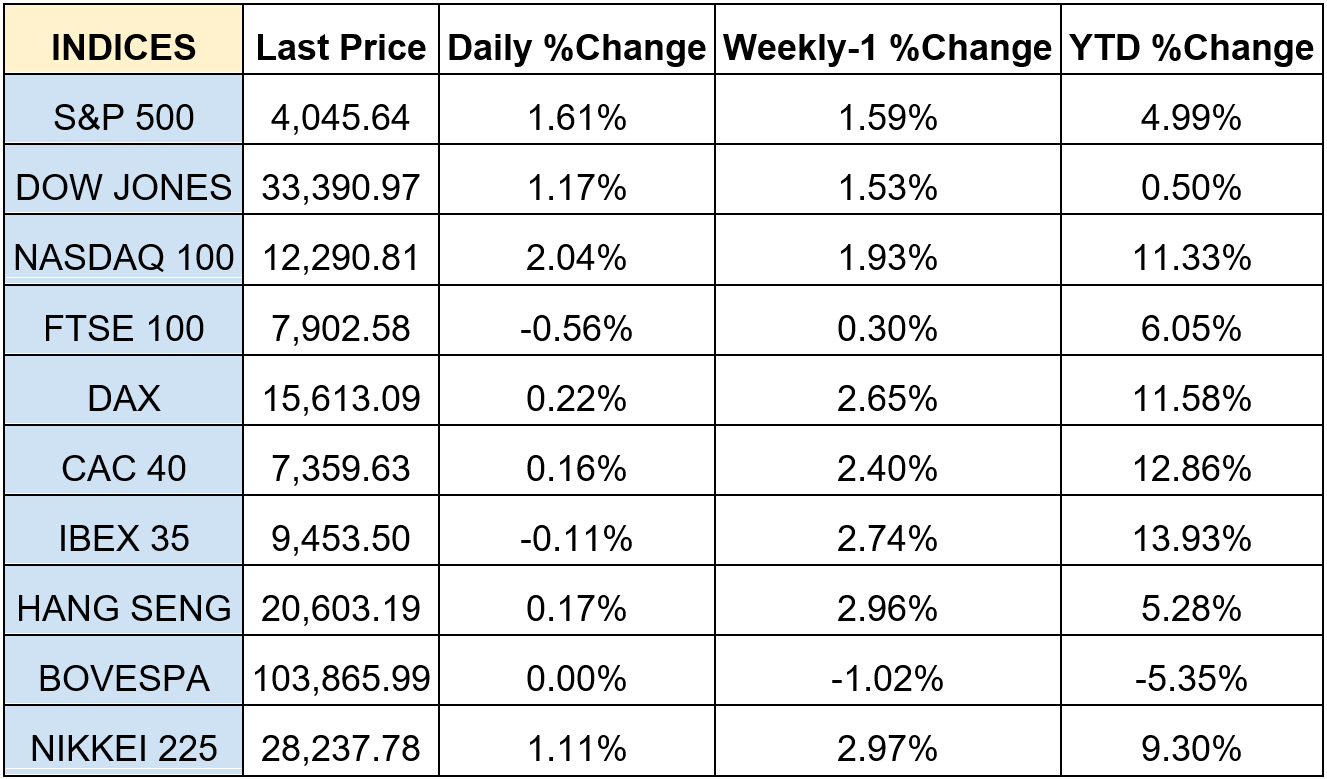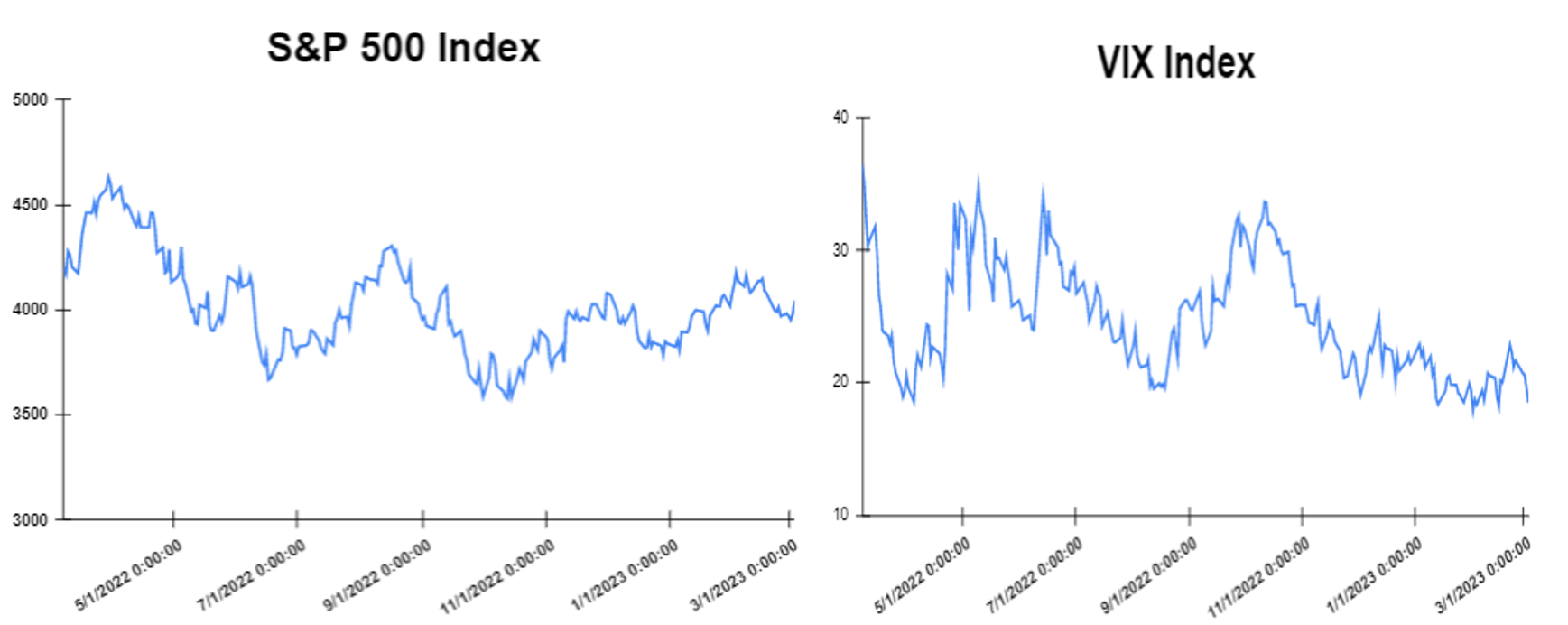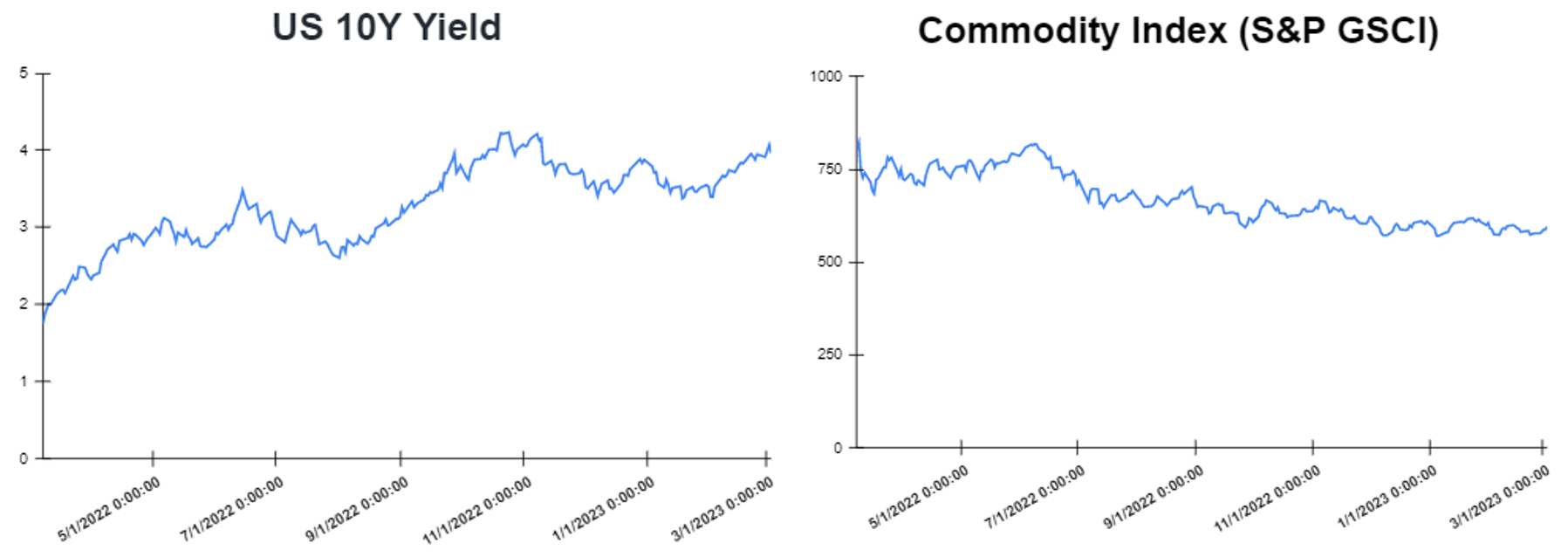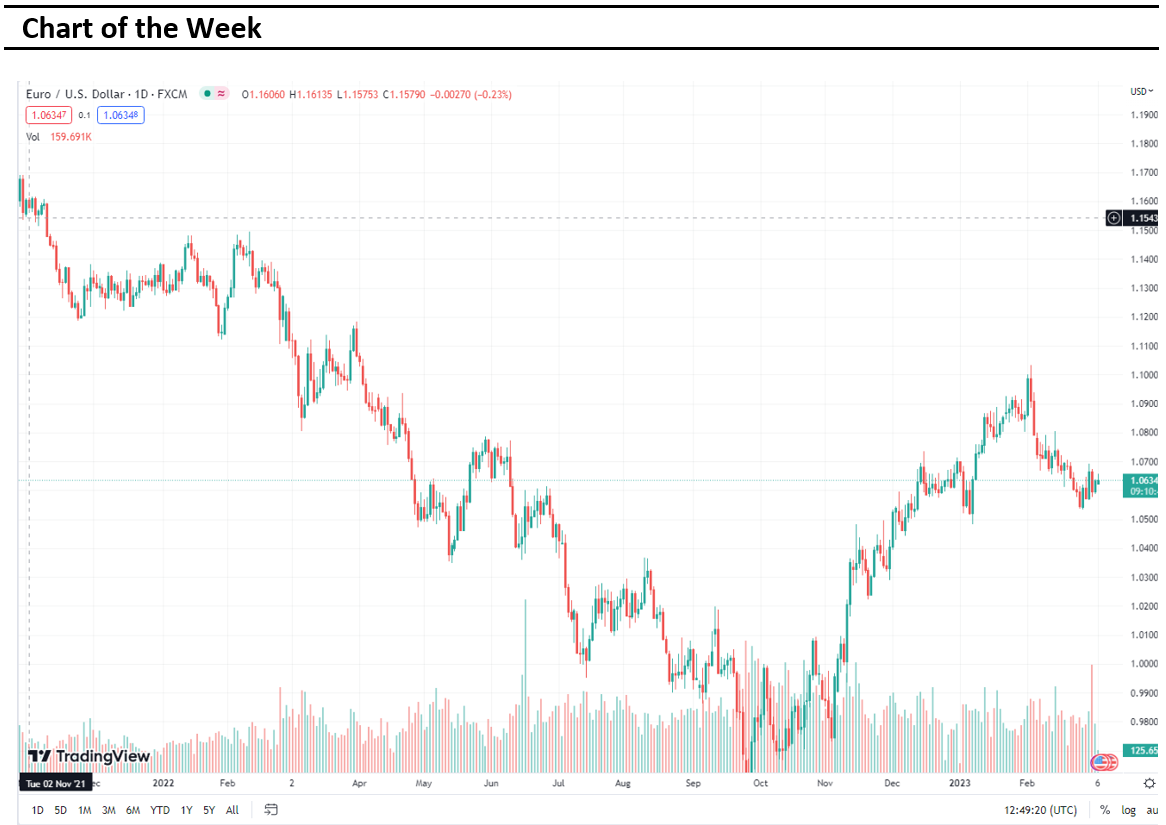Global markets finished the week higher
Global markets started the week higher following their worst week of the year. Pending home sales in the United States, which was released on Monday, jumped 8.1% in January higher than expected, after a slight decline in mortgage rates in December and January. On the same day, the European Union and the United Kingdom confirmed reaching a deal on the “Windsor Framework”, that is expected to resolve some issues in Northern Ireland that were left unaddressed by the two sides’ post-Brexit trade agreement, sealed over three years ago. Moreover, on Wednesday markets were mostly lower after Federal Reserve hinted that they will be open to rate hikes between 25-50 basis points in the next central bank meeting. In other news, the Eurozone business activity accelerated further in February as the Eurozone Purchasing Managers’ Index (PMI) Composite Output Index came in at 52.0, reaching its eight-month high. Moreover, growth in activity in the United States services industry (ISM Services PMI) stood at 55.1% in February, 0.1 percentage point lower than January’s reading of 55.2 percent. The Dow Jones gained 1.17% at the closing bell on Friday. The S&P 500 advanced by 1.61%. Furthermore, the DAX jumped by 1.64%, CAC 40 rose by 0.88% and the FTSE 100 ended the session flat. In addition, investors are looking forward to the US Nonfarm Payrolls report on Friday, 10 of March, which is expected to post an increase of 200K for February, versus a 517K increase for January.
Treasury yields declined towards the end of the week
Yields slightly declined on Friday after investors weigh the prospect of further interest rate hikes by the Federal Reserve. The yields moved markedly higher over the last month, prompting a pullback for the Stock markets in February. This rise indicates that traders are convinced that rates will stay higher for longer. On Friday, the yield on the 2-year Treasury decreased to 4.863%. Short-term rates are more sensitive to Fed rate hikes. The 10-year Treasury yield, hit 3.969%, down by about 10 basis points. The 30-year Treasury yield, which is key for mortgage rates, hit 3.888%. The spread between the US 2’s and 10’s widened to -89.4bps, while the spread between the US 10-Yr Treasury and the German 10-Yr bond (“Bund”) tightened to – 124.9bps.
Volatile week for USD
The US Dollar fell by 0.3% to 104.60, from as high as 105.36 at the start of the week, its strongest level since January. 6th and moved lower towards the end of the week after the Institute for Supply Management’s (ISM) non-manufacturing index dipped to 55.1 from 55.2 in January. The EURUSD traded higher by 0.3% at 1.0628, after starting the week at a nearly two-month low of 1.0533. Furthermore, the GBPUSD rose by 0.7%, ending the week higher at 1.2032. The pound’s gains came as Britain struck a post-Brexit Northern Ireland trade deal with the European Union. Additionally, the USDJPY eased by 0.4% to 136.26 yen on Friday, after climbing to 137.10 on Thursday, the highest since December. 20th .
Oil and Gold traded higher towards the end of the week
Gold started the week higher after US dollar fell after missed expectation on series of USA data. Gold traded higher at the end of the week after Atlanta Fed President Raphael Bostic reiterated the case for a 25 basis point hike in March. Prices of Oil moved lower at the start of the week, as investors worry about Federal Reserve’s future monetary policy. In addition, on Friday, the prices of oil futures gained as global economy raised demand concerns. Meanwhile, the Crude Oil Inventories report will be released on Wednesday. A decrease is expected in the number of barrels held by US firm by 3.764M.
Stock indices performance

Key weekly events:
Monday- 06 March 2023

Tuesday – 07 March 2023

Wednesday – 08 March 2023

Thursday – 09 March 2023

Friday – 10 March 2023





Sources:
